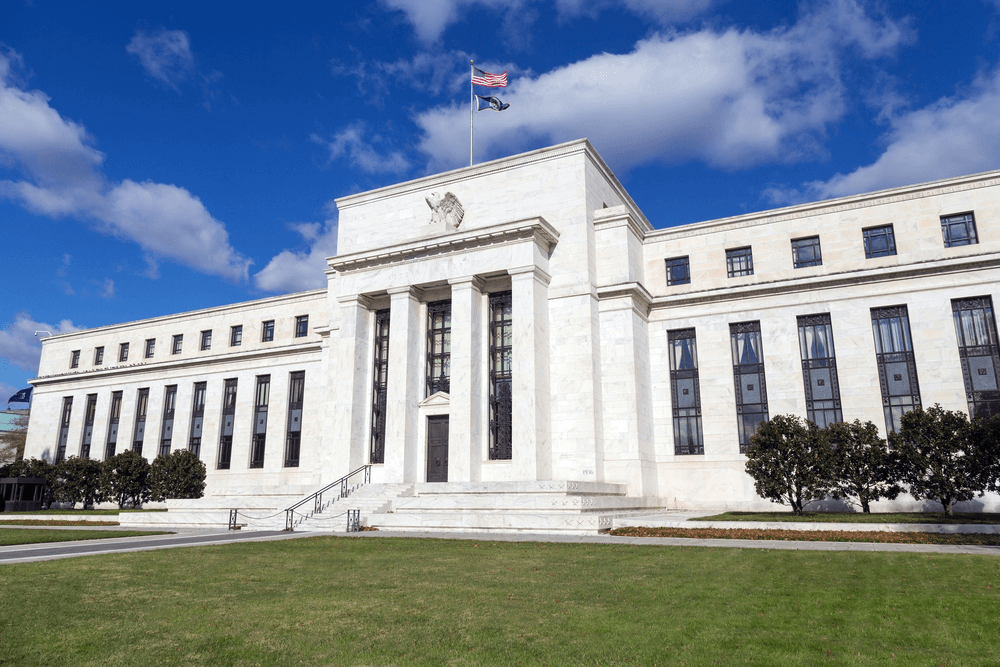Economists say Russia's conflict with Ukraine could complicate the Fed's interest rate decision. The situation affects the rise in prices for oil and gasoline, which can “fuel” inflation while putting pressure on economic growth. Interest rate forecasts are changing.
Economists at the largest US banks point out that the Federal Reserve System (Fed) may face some of the most difficult decision-making conditions in history.
Investors around the world will be keeping an eye on what the US central bank will announce at its upcoming meeting on March 15-16 as Fed officials announced an increase in interest rates, a halt to asset purchases, and a move to shrink the balance sheet.
Many Wall Street analysts thought that the Fed could immediately go up +0.5% from the current level of 0% - 0.25%, pointing to its belated reaction to record US inflation.
Bruce Kasman, the chief economist at JPMorgan (JPM), believes the Fed will raise rates by 0.25% in March as the situation in Ukraine weakens the case for a 0.5% hike. His forecast is six more rate hikes before the end of the year.



Experts point to rising prices for oil and other commodities due to fears that the entry of Russian troops into Ukraine and the sanctions of the United States and its allies could potentially lead to a restriction of supplies. Russia is a major exporter of oil and natural gas.
The price of oil and gasoline is a big part of what many Americans buy, and it is the American consumer who controls about 70% of the US economy.
U.S. consumers paid an average of $3.53 per gallon of unleaded gasoline on Tuesday, up $0.9 more than a year ago and $0.21 more than last month, according to AAA data. Crude oil has risen in price by about 50% in the past year.
Mark Zandi, chief economist at Moody's Analytics, said:
“Oil is likely up $10 to $15 a barrel due to the conflict… If this price holds, it could add about $0.3 to $0.4 a gallon to unleaded gasoline. This is as much as half a percent to annual consumer inflation, and we are already at the level of 7.5%. I think this is really complicating the Fed's efforts to contain inflation and return to full employment."
Experts say that the central bank may face "double pressure" - on the one hand, the rise in oil prices is a catalyst for inflation, on the other hand, if the price rises and persists, it will slow down economic growth.
Economists believe that the Fed, which has declared its latest main goal - to contain inflation, may become even more aggressive in policy if it sees a sharper rise in inflation.
At the same time, historically, the Fed did not take steps to raise rates during periods when oil prices are rising.
Bruce Kasman, chief economist at JPMorgan, noted:
"In terms of the Fed's response function, under Greenspan, Bernank, and Yellen, when they saw a sharp rise in oil prices, it either happened after they finished tightening or kept them from tightening."
Thus, the outlook for the central bank becomes dim.
Mark Zandi, chief economist at Moody's Analytics, called a jump in oil prices to $150 less likely, but rising fuel prices could still get the Fed's attention.
“I think this is now reinforcing their desire to quickly normalize policies because they are more focused on inflationary effects than growth effects,” Zandi said. “The pandemic has become an even bigger supply shock, and on top of it, another oil price shock has been superimposed. We are experiencing two major supply shocks at the same time. That's why it's so difficult for the Fed."
Think we missed something? Let us know in the comment section below.



